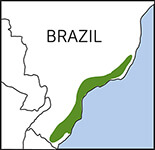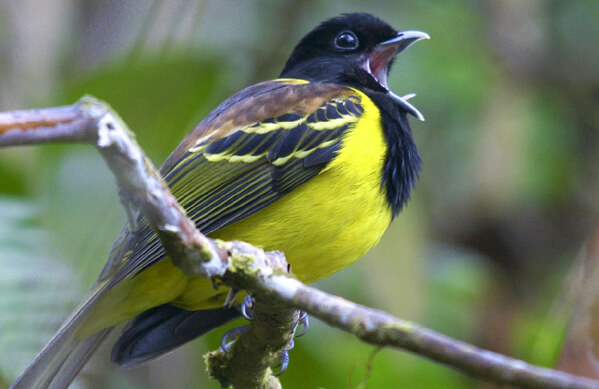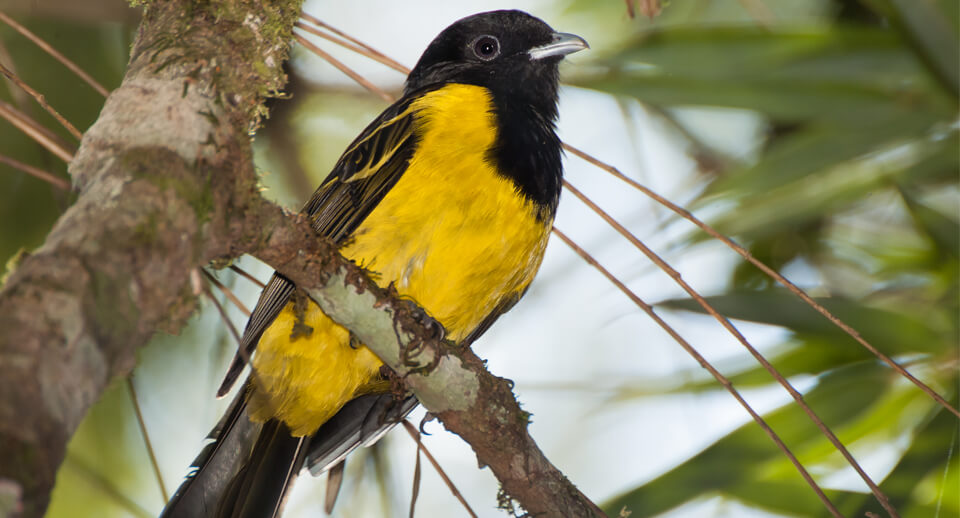 The Hooded Berryeater is the larger of two berryeater species. The other — the Black-headed Berryeater (Carpornis melanocephala) — is much rarer, and a significant number of this species' population is found north of the Hooded Berryeater's range.
The Hooded Berryeater is the larger of two berryeater species. The other — the Black-headed Berryeater (Carpornis melanocephala) — is much rarer, and a significant number of this species' population is found north of the Hooded Berryeater's range.
Like many Atlantic Forest endemics, the Hooded Berryeater's population is suspected to be in decline because of ongoing habitat destruction. The species can be found at Brazil's "Songbird Forest" or Mata do Passarinho Reserve, also known as Stresemann's Bristlefront Reserve, which was created in a bid to prevent the extinction of the reserve's namesake bird.
Brazilian conservation group Fundação Biodiversitas created the reserve in 2007 with ABC support. In 2015, the reserve was increased to more than 2,300 acres, helping to protect one of the last patches of forest in northern Minas Gerais and southern Bahia states. Other birds that find refuge here are the Pin-tailed Manakin, Saffron Toucanet, and Gilt-edged Tanager.
Sign up for ABC's eNews to learn how you can help protect birds
Males and female Hooded Berryeaters appear similar, but the male's colors are brighter. Despite its bright yellow coloration, this species is more often heard than seen; its abrupt call gives rise to its onomatopoeic local name, “coró-cochó.” (Audio: Jeremy Minns, XC342009. Accessible at www.xeno-canto.org/342009.)
True to its name, the Hooded Berryeater eats mostly fruit, although it will also take large insects. It is a solitary species but can often be seen associating with mixed-species flocks.
Donate to support ABC's conservation mission!




















































